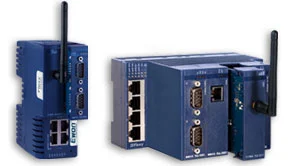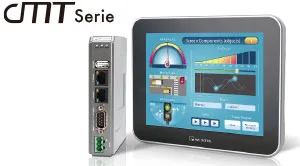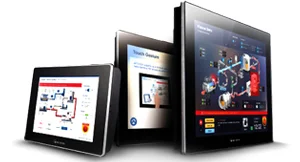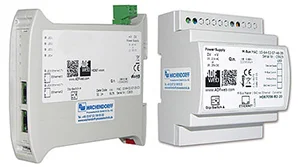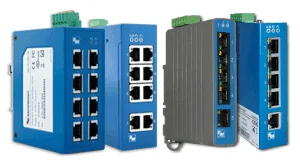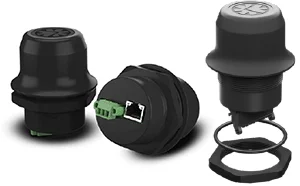
The AmericanSocietyof Heating, Refrigerationand AirConditioning EngineersInc.(ASHRAE) developed the "BuildingAutomationand Controlnetworks", or BACnet for short, in 1991. This was standardized in 1995 in the ANSI/ASHRAE Standard 135-1995.
The protocol was developed to interoperably network devices and systems in building automation and building management systems. From simple data exchange applications to complex building management infrastructures, BACnet is very scalable.
Physics
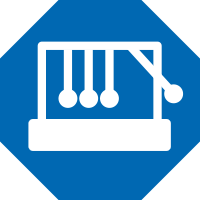
BACnet/MSTP
MSTP stands for Master/SlaveTokenPasingand is based on the serial transmission of RS485. The master initiates communication with the slaves. A network can contain several masters that take turns accessing the bus; each master hands over to the next once communication is complete. This procedure is called token passing.
The cable used is a twisted two-wire cable. The maximum recommended cable length is 1200 m (at 38,400 baud). The possible cable length depends on the baud rate used.
The baud rate can be selected between 9,600 bit/s and 115,200 bit/s (usual baud rates are 19,200 and 38,400).
The bus must be terminated with 120 ohms between the signal lines at the beginning and end.
Up to 127 devices can be operated in a BACnet/MSTP network.
BACnet/IP is based on Ethernet (IEEE802.3) and the IP layer. Accordingly, various topologies are possible. No special infrastructure components (e.g. switch) are required.
When routing BACnet/IP between different IP subnetworks, it must be noted that broadcast messages are usually not transmitted via the router without further configuration. Devices with the special BACnet Broadcast Management Device (BBMD) function are available for this purpose.

BACnet/MSTP uses a line topology due to the RS485 physics.
Up to 245 bytes can be transmitted in one telegram.
BACnet/IP follows the client/server principle, whereby most participants are often client and server depending on whether they are currently initiating a request or responding to a request.
General
Standardized BACnet objects ensure a high level of interoperability between BACnet participants. There are real BACnet objects such as analog or digital inputs and outputs or virtual ones such as calendars, events, etc.
There are optional objects and objects that every participant must have, such as for identification or configuration. Standard BACnet objects have defined properties such as identifier, name, value, description, unit, limits, resolution, min/max values and many more, depending on the object type (device, analog, binary, ...)
BACnet services describe the communication between the participants. There are alarm services, event services, object access services, file access services and device management. Priorities are used to determine the order in which they are processed. Security-relevant and device-critical services always have priority, other commands can be freely prioritized.
Transmission on change ofvalue(COV) makes transmission much more efficient, as only new values are transmitted. In addition, a deadband can be defined so that value changes are only transmitted above a certain limit.
Alarm and event management enables certain values to be monitored, which must then be recorded and, if necessary, acknowledged by a user.
In the "ProtocolImplementationConformanceStatement" document(PICS), the manufacturer provides device information about the functions of its device. This contains information about the conformance class as well as other details.
Conformance classes define a minimum range of functions for a device class.
The higher device classes contain all the functions of the lower classes:
- Class 1: Sensor
- Class 2: Actuator
- Class 3: Controller
- Class 4: Controller
- Class 5: Operating device
- Class 6: Devices with time, calendar function and event management
BACnet standardized device profiles define/describe functions that a specification-compliant device type must fulfill. The following eight device profiles are defined:
- B-AWS Management and operating station with a wider range of functions (Advanced Workstation)
- B-OWS Management and operating station (Operator Workstation)
- B-OD Operator Device
- B-BC Freely programmable automation device (Building Controller)
- B-AAC Automation device with program selection (Advanced Application Controller)
- B-ASC Automation device with fixed program (Application Specific Controller)
- B-SA Switching or actuating device (Smart Actuator)
- B-SS Sensor (Smart Sensor)
The BACnetInteroperabilityBuildingBlocks(BIBBs) consider interoperability purely from the point of view of the functions, which are summarized in different groups:
- Data exchange
- Trend recording
- Scheduler
- Alarms and events
- Network management
- Device management

The configuration is carried out via the device and network management. This involves creating links (bindings) between devices, which can be static or dynamic. Static configuration is usually carried out using the corresponding configuration software from the BACnet controller manufacturer. Dynamic linking requires devices that have the corresponding function to search for and identify devices in the network (Who-is?, I-Am services). With BACnet/MSTP, a MAC address is often set using a DIP or rotary switch.

BACnet PTP is a serial connection (RS232) between two participants that can also be realized via modems.
BACnet via LONTalk uses the "LocalOperatingNetwork" (LON) and its variety of possible transmission media as the physical layer.
Areas of application
Management of heating, cooling and air conditioning systems and other tasks in building automation.
Remote maintenance
Modular remote maintenance and M2M router Ewon Flexy for remote maintenance and data services
HMI and IIoT edge Gateways
The smart HMIs of the cMT series - Server / Client HMI architecture - High flexibility and strong improvement in work efficiency.
HMI and IIoT edge Gateways
Professional human-machine interface - Aesthetic design and ergonomic operation.
Gateways
BACnet/IP or BACnet MS/TP possible...
Client/server or master/slave
Various housing designs...
Industrial EtherNet switches
Switches connect industrial communication components such as controllers, panel PCs, IOs or frequency inverters at a dedicated point and form the central components of Ethernet-based communication, such as BACnet.




